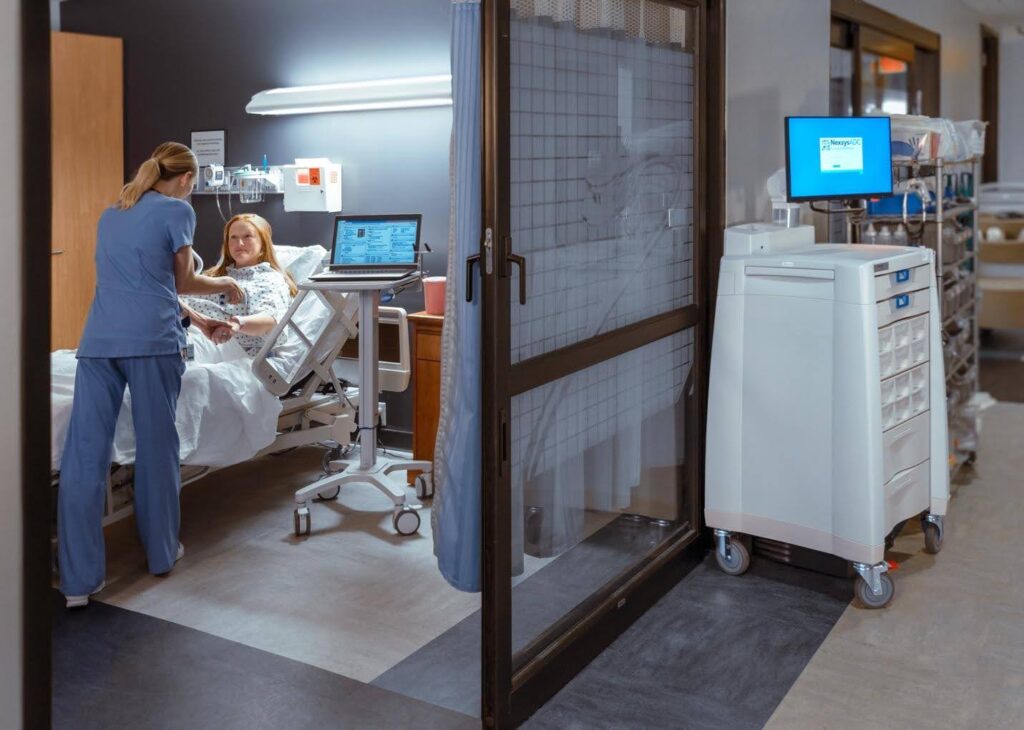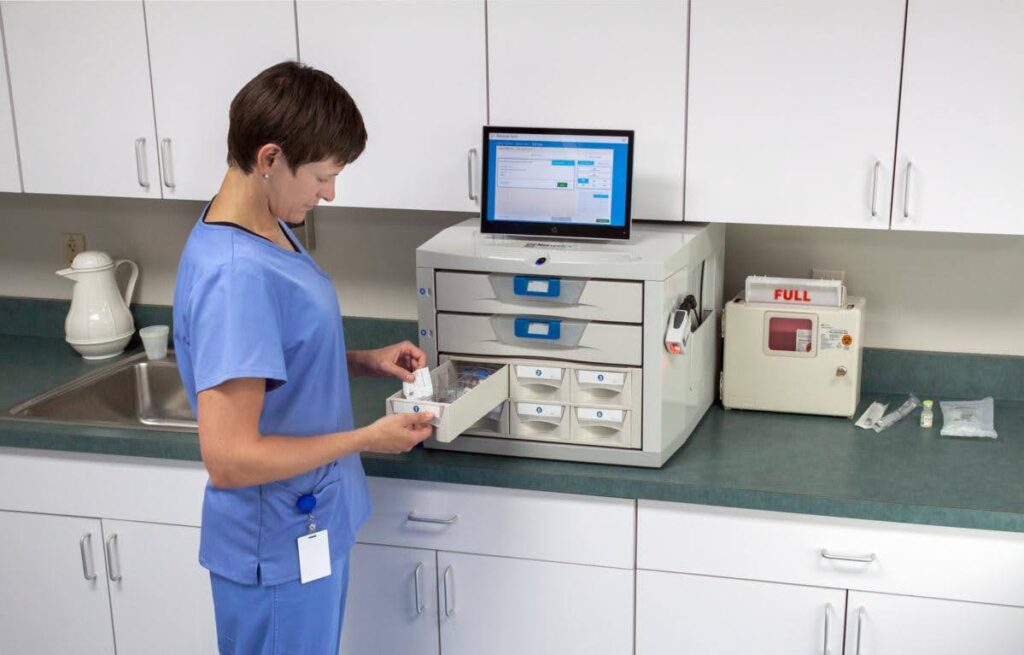
For surgery centers, the question isn’t whether diversion could happen—it’s whether your systems are built to stop it.
Drug diversion poses a significant threat to patient safety and operational integrity in healthcare. For ambulatory surgery centers (ASCs), the risk is particularly acute. With limited staffing, high patient volume, and frequent controlled substance use, ASCs typically lack the robust safeguards found in hospital settings—yet must meet identical regulatory standards.
Diversion extends beyond individual behavior to systemic vulnerabilities: inadequate access controls, manual inventory tracking, and fragmented oversight create environments where diversion may continue undetected for months. Today’s ASCs need a strategic, multi-layered approach driven by automation and data.
“ASHP reports approximately 15% of healthcare professionals have engaged in some form of controlled substance misuse during their careers—highlighting the widespread nature of this risk.”
Surgery centers routinely handle high volumes of Schedule II–V medications, including opioids and anesthetics administered frequently throughout the day. Unlike hospitals, most ASCs operate without dedicated pharmacy staff, relying on a small clinical team to manage medication storage, retrieval, administration, and waste documentation.
This lean structure creates significant oversight gaps. The American Society of Health-System Pharmacists (ASHP) has identified common diversion methods in these settings, including medication substitution, theft from unsecured storage, and falsified administration records. ASHP reports approximately 15% of healthcare professionals have engaged in some form of controlled substance misuse during their careers—highlighting the widespread nature of this risk.

In a case profiled by Outpatient Surgery Magazine, an ASC’s lack of formal diversion protocols allowed an impaired staff member to divert drugs for over a year before detection. The investigation revealed absent access controls, missing audit trails, and inconsistent documentation—systemic vulnerabilities common across many surgery centers.
ASCs must meet the same Drug Enforcement Administration (DEA) standards as larger acute care facilities, despite having fewer resources. The DEA requires registration for all facilities handling controlled substances, secure storage, perpetual inventory systems, and detailed transaction logs documenting each step in a medication’s lifecycle. Any suspected loss or diversion must be reported within one business day using DEA Form 106.
The challenge for ASCs lies in operationalizing these standards sustainably. Manual inventory processes, handwritten logs, and dispersed oversight quickly undermine compliance. Even minor discrepancies—undocumented waste or unlocked storage—can trigger DEA audits and significant penalties.
A proactive compliance approach is essential. This means moving beyond reactive policies toward real-time accountability enabled by technology.
Manual inventory processes, handwritten logs, and dispersed oversight quickly undermine compliance.
Prevention happens through daily practices, not policy manuals. Diversion risk spans the entire medication management continuum—from ordering to disposal—involving leadership, clinical teams, IT, and compliance personnel.
Building accountability starts with education. Staff need training on specific risks and consequences of drug diversion, including recognizing behavioral red flags, understanding chain-of-custody requirements, and reporting concerns without fear of retaliation. ASCs that establish cross-functional diversion committees typically achieve better engagement and protocol adherence, as noted in Becker’s ASC Review’s implementation guide.
Policy alone isn’t sufficient. Without enforcement tools, even well-designed prevention strategies can fail. This is where automation becomes critical.
Surgery centers have historically relied on trust and paper logs for medication access. This approach is no longer defensible. Modern Automated Dispensing Cabinets (ADCs), such as NexsysADC™, deliver enhanced security and transparency to medication management.
Today’s ADCs provide biometric access controls, limit dispensing to authorized users, and record every interaction with timestamps and user credentials. This creates both a deterrent and an immutable audit trail supporting regulatory compliance.

An industry analysis on narcotic security in ASCs found that facilities implementing ADC technology experienced a 43% reduction in diversion incidents and saved 8 hours monthly on manual inventory tasks. These benefits extend beyond operations to culture—embedding accountability into the system itself shifts staff behaviors and reduces vulnerabilities.
NexsysADC is particularly well-suited for ASC environments, offering secure, configurable storage in a compact footprint. Its integration with electronic health records (EHRs) and automated DEA-compliant reporting simplifies what has traditionally been one of the most challenging aspects of diversion prevention.
Even with appropriate technology, ASCs must reinforce diversion prevention through operational discipline. This includes routine blind counts, dual-signature waste verification, and regular internal audits. Training should occur at hire and annually thereafter. Documentation must be reviewed consistently for both compliance and anomalies that might indicate systemic risk.
Some centers implement scenario-based drills to test staff response to suspected diversion. These exercises reveal process weaknesses and measure how effectively training has been internalized.
Successful diversion prevention programs operate as continuous improvement cycles—reviewing incident data, updating policies based on emerging threats, and evaluating technology for configuration weaknesses. They apply the same precision to security that they demand in clinical care.
For surgery centers, the question isn’t whether diversion could happen—it’s whether your systems are built to stop it. In an environment where regulatory scrutiny is intensifying and the consequences of noncompliance can be severe, passive prevention is no longer enough. Diversion must be addressed proactively, strategically, and systemically.
With the right foundation—automated dispensing, cross-functional accountability, and real-time data—ASCs can build a closed-loop medication management ecosystem that deters misuse, streamlines operations, and protects patients at every step.

Capsa Healthcare is your partner in making that shift possible. NexsysADC is purpose-built for ambulatory care, delivering secure access, audit-ready tracking, and simplified DEA compliance in a compact, intuitive solution.
Ready to eliminate blind spots and elevate your diversion strategy? Connect with our team to explore how NexsysADC can help your ASC build a safer, smarter future.
Let’s engineer a path to safer care—starting today.